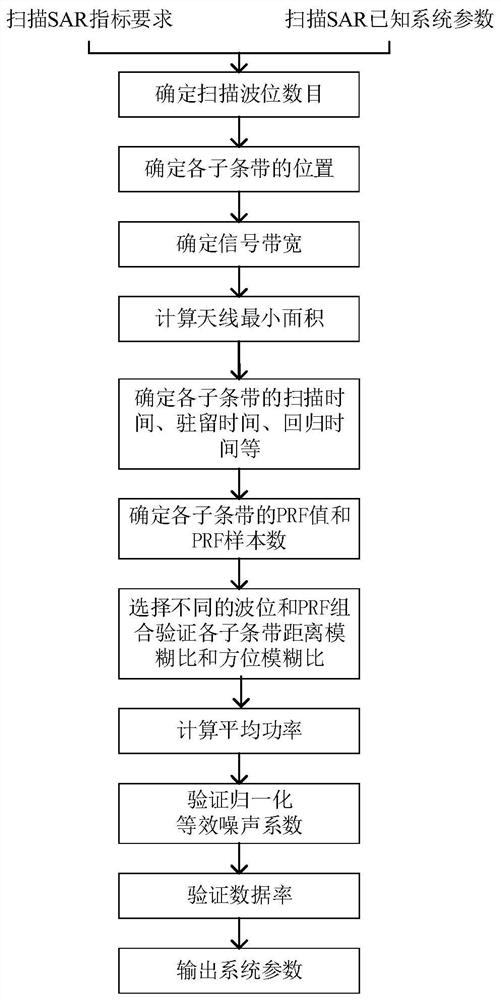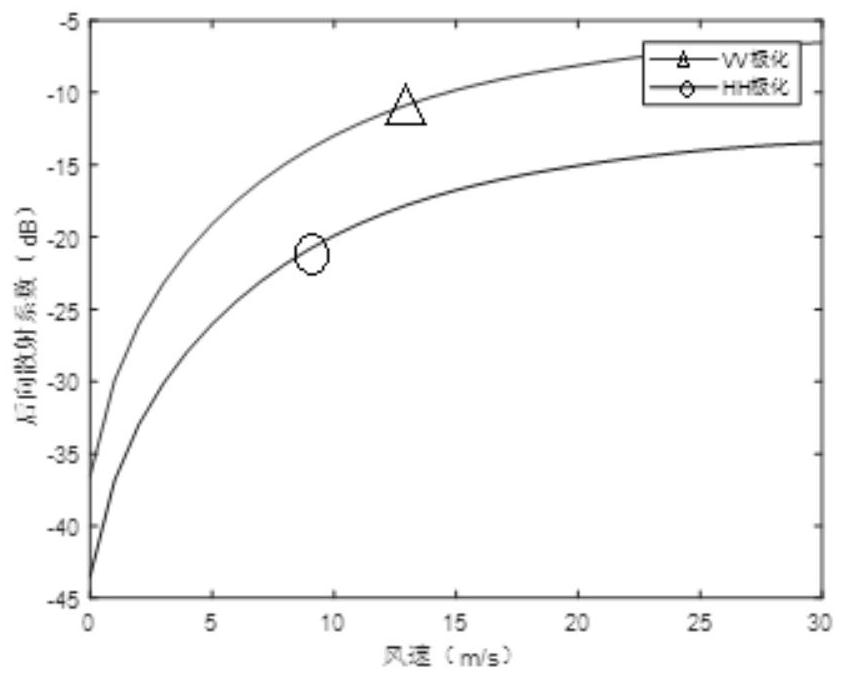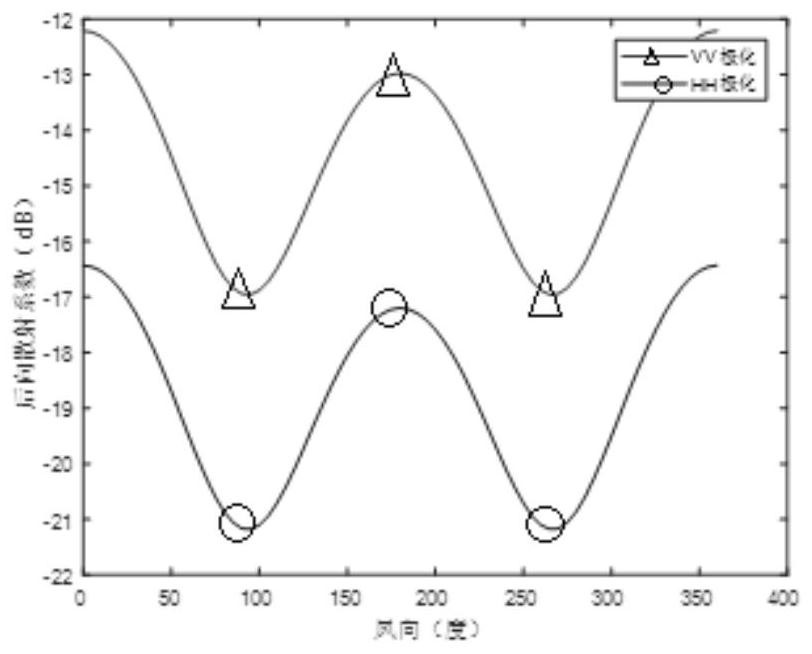System parameter design and transmission power optimization method of multi-mode small satellite SAR in scanning mode
A technology of scanning mode and system parameters, applied in radio wave measurement systems, instruments, measurement devices, etc., can solve the problems of not introducing sub-strip position parameters and time parameters, and not considering transmission power optimization, etc., to improve the boot time. Effect
- Summary
- Abstract
- Description
- Claims
- Application Information
AI Technical Summary
Problems solved by technology
Method used
Image
Examples
Embodiment 1
[0116] combine figure 1 , a system parameter design method for multi-mode small-satellite SAR in scanning mode, comprising the following steps:
[0117] The system parameter design of small satellite SAR in scanning mode needs to determine the system working parameters such as antenna size, signal bandwidth, pulse repetition frequency, number of scanning waves, position of each sub-strip, and time relationship of each sub-strip. In order to determine the above working parameters, parameters such as distance resolution, azimuth resolution, survey zone, satellite orbit height, and pulse width are often known or given.
[0118] Step 1: Determine the number of scanning waves.
[0119] Scan wave number N B It is related to the scanning time of each sub-strip (that is, the full-aperture imaging accumulation time corresponding to the beam width) and the beam dwell time (that is, the time for one burst continuous imaging of a certain sub-strip).
[0120] Let k represent the number ...
Embodiment 2
[0190] The sea surface can be regarded as a composite rough surface composed of a slightly rough surface superimposed on a large wave structure. The large wave structure causes the inclination of the slightly rough surface to form a so-called "dual-scale model". The small-scale capillary wave component in the dual-scale model and large-scale long-wave components respectively correspond to two backscattering mechanisms of high-frequency electromagnetic waves from the sea: Bragg scattering at oblique incidence and specular reflection at near-normal incidence. For both SAR and scatterometers, the incident angle is relatively large, so Bragg scattering is the main scattering component.
[0191] The expression of the Bragg scattering component is:
[0192]
[0193] In the formula, σ 0 is the normalized backscattering coefficient, θ is the incident angle, g ij (θ) is the first-order scattering coefficient related to the polarization mode, S PM is the two-dimensional PM spectru...
Embodiment 3
[0209] Verify the rationality of the system parameter design method for multi-mode small satellite SAR in scanning mode.
[0210] The sea surface simulation method used
[0211] In order to simulate the small satellite SAR ocean scene echo, it is first necessary to simulate the sea surface. At present, the main method for sea surface simulation is to generate wave spectrum first, and then simulate the sea surface according to the wave spectrum. The wave spectrum is the power density spectrum of the sea surface, which is the Fourier transform of the sea surface height fluctuation correlation function. Common wave spectra include PM spectrum, JONSWAP spectrum and Apel spectrum. In this paper, the most concise PM spectrum in mathematics is used to simulate the sea surface.
[0212] The PM spectrum is a gravitational wave spectrum in which the long and short gravitational waves play a major role respectively when the wave numbers are different. It is obtained by fitting after sp...
PUM
 Login to View More
Login to View More Abstract
Description
Claims
Application Information
 Login to View More
Login to View More - R&D
- Intellectual Property
- Life Sciences
- Materials
- Tech Scout
- Unparalleled Data Quality
- Higher Quality Content
- 60% Fewer Hallucinations
Browse by: Latest US Patents, China's latest patents, Technical Efficacy Thesaurus, Application Domain, Technology Topic, Popular Technical Reports.
© 2025 PatSnap. All rights reserved.Legal|Privacy policy|Modern Slavery Act Transparency Statement|Sitemap|About US| Contact US: help@patsnap.com



